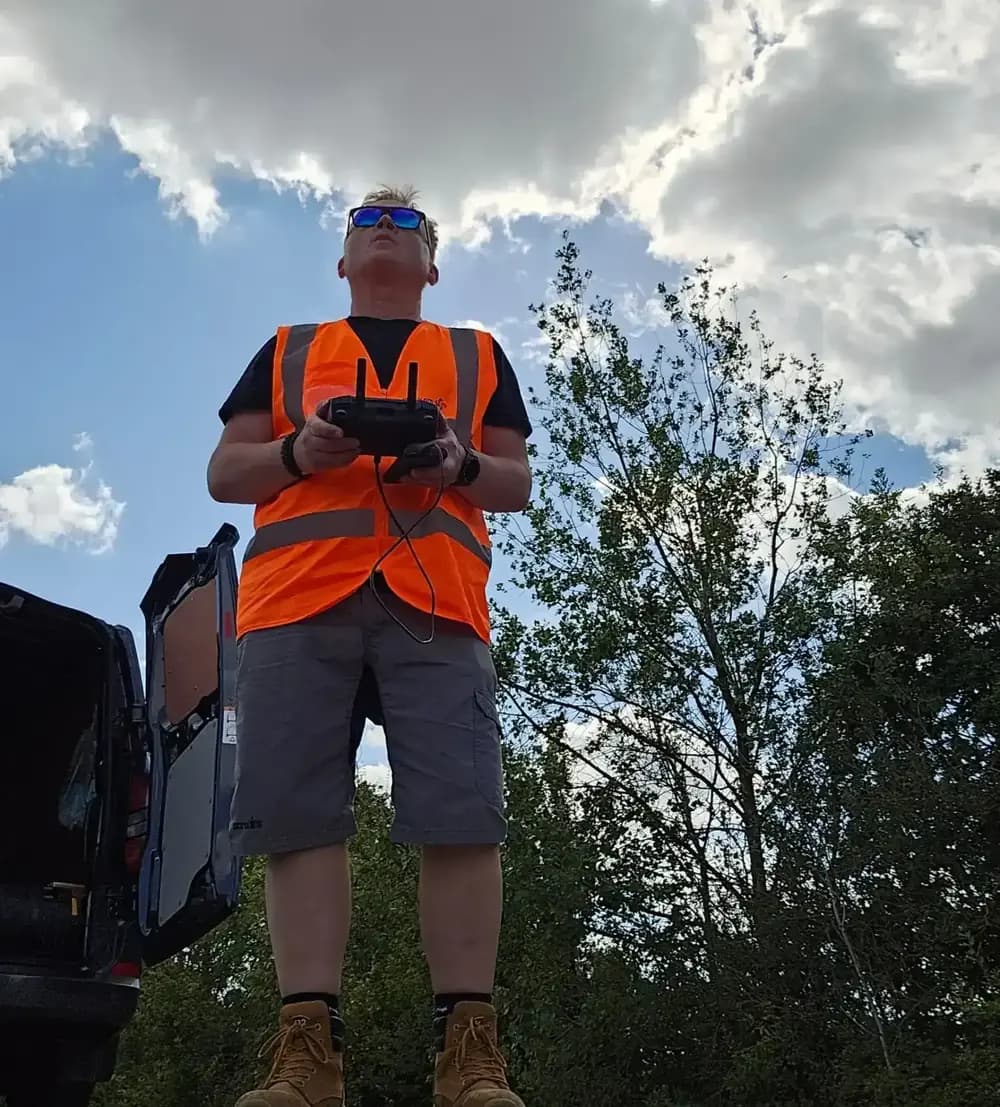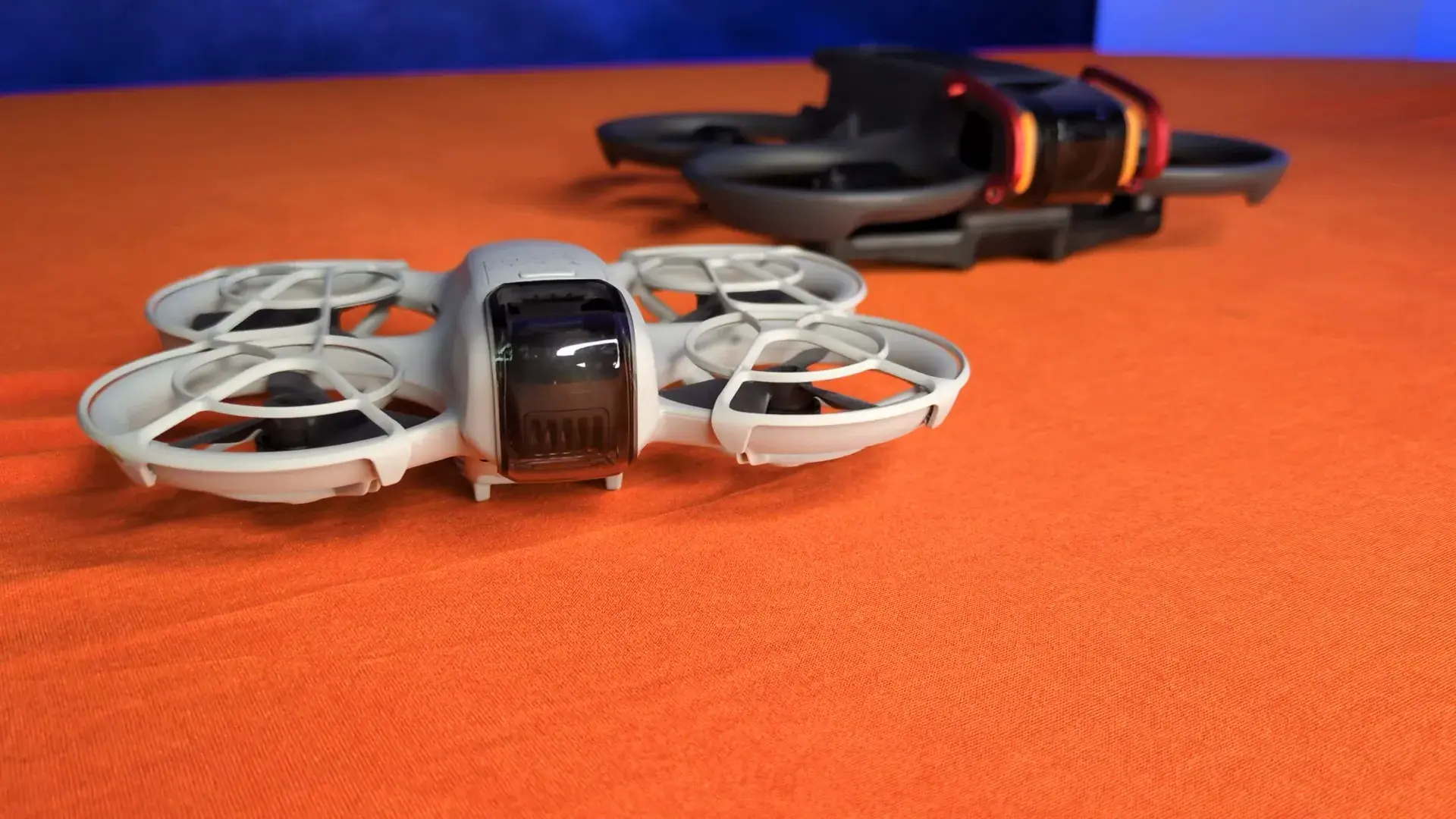
Taking your DJI Neo into the air for the first time can be an exciting but slightly nerve-wracking experience. Ensuring a smooth and safe liftoff is the first step to a successful flight.
While it may seem complex, DJI has designed the process to be highly intuitive and user-friendly.
This guide will walk you through the standard automated takeoff procedure, ensuring you can get your drone airborne with confidence.
30 Second Summary
- To prepare for takeoff, place the DJI Neo on a flat, open surface and ensure it is powered on and connected to your remote controller.
- Open the DJI Fly app and wait for the DJI Neo to acquire a strong GPS signal, which will be indicated on the screen as ready for flight.
- Tap the auto-takeoff icon, which is an arrow pointing upwards, located on the left side of the app's main screen.
- Press and hold the on-screen takeoff button that appears to confirm the command and initiate the DJI Neo's ascent.
- The DJI Neo will then start its motors, automatically lift off the ground, and hover at a height of about 1.2 meters, awaiting your input.
Place the DJI Neo on a Flat, Open Surface and Ensure It Is Powered On
Before you can take off, a few crucial pre-flight preparations are necessary. Start by placing your DJI Neo on a flat, level surface with plenty of open space around it to avoid hitting obstacles during ascent. Remove the gimbal protector, power on the drone, and then power on your remote controller. Ensure that both devices are successfully linked and that the DJI Fly app is open on your connected smartphone.
Open the DJI Fly App and Wait for the DJI Neo to Acquire a Strong GPS Signal
Once your equipment is powered on and connected, the DJI Fly app will display the drone's live camera feed and flight status. It is critical to wait until the app indicates that the DJI Neo has acquired a strong GPS signal and recorded its Home Point. This step is vital for flight stability and enables the drone's Return-to-Home (RTH) safety feature, which allows it to fly back to its takeoff location automatically if needed.
Tap the Auto-Takeoff Icon on the Left Side of the App's Main Screen
On the left-hand side of the DJI Fly app interface, you will see an icon depicting an arrow pointing upwards—this is the auto-takeoff button. Tapping this icon initiates the automated takeoff sequence. This feature is designed specifically for ease of use, allowing even novice pilots to perform a perfect, stable liftoff without needing to use the control sticks manually.
Press and Hold the On-Screen Takeoff Button to Confirm the Command
After tapping the takeoff icon, a confirmation prompt will appear in the center of your screen. To prevent accidental takeoffs, you must press and hold this on-screen button. This two-step process is a safety measure that ensures you are intentionally and consciously commanding the DJI Neo to begin its flight. The drone will not lift off until you complete this confirmation step.
The DJI Neo Will Then Automatically Lift Off and Hover
Once you confirm the command, the DJI Neo's motors will spin up, and the aircraft will automatically ascend to a predetermined hover altitude, typically around 1.2 meters (approximately 4 feet) above the ground. It will then hold its position steadily, waiting for you to provide your first flight command via the remote controller's sticks. At this point, your DJI Neo is successfully airborne and ready for you to begin your flight.
Conclusion
The DJI Neo's automated takeoff feature makes getting airborne a simple and stress-free process. By following the essential pre-flight preparations and using the intuitive commands within the DJI Fly app, you can ensure a safe and controlled start to every flight. This system allows you to focus on your surroundings and flight plan, building confidence from the moment your drone leaves the ground.
Frequently Asked Questions
How do I take off manually without using the app's button?
To take off manually, you must first start the motors using a Combination Stick Command (CSC). Pull both control sticks down and to the inner or outer corners simultaneously and hold them until the motors start. Once the motors are spinning, slowly push the left control stick (throttle) upwards until the DJI Neo lifts off the ground.
Why won't my DJI Neo take off even if the motors are running?
There are several common reasons for this. The drone may be in a restricted GEO zone, which prevents flight for safety reasons. It could also be in Beginner Mode, which requires a strong GPS signal before allowing takeoff. Check the map in your DJI Fly app for any red zones and ensure you have a strong satellite lock before trying again.
Is it safe to take off from my hand?
While a ground launch is always preferable, a hand launch is possible if you are in an area without a flat surface. To do this, hold the drone firmly from underneath, keeping your fingers clear of the propellers. Initiate the takeoff sequence and as the drone begins to ascend, release it smoothly. This is an advanced maneuver and should be performed with extreme caution.
What should I do if the takeoff icon is missing or greyed out?
If the takeoff icon doesn't appear, it usually means a pre-flight check has failed. Most commonly, the drone has not yet acquired a strong enough GPS signal to set a Home Point. The drone may also need a firmware update, as out-of-date firmware can prevent connection and flight. Ensure you are in an open outdoor area and give the drone a few minutes to lock onto satellites.
Can I take off without a GPS signal?
Yes, it is possible to take off without GPS, as the drone will operate in ATTI (Attitude) mode, which relies on its internal barometer to hold altitude. However, in ATTI mode, the drone will not hold its position and will drift with the wind, requiring constant manual control. It is strongly recommended, especially for new pilots, to wait for a strong GPS lock before taking off.
My motors won't start at all. What's the problem?
If the motors won't start, first check that the propellers are installed correctly, as the drone's self-check will prevent startup if they are mismatched. Also, ensure you are not in a restricted flight zone. If the issue persists after checking these factors, there could be a motor malfunction, which would require professional service from DJI.
How do I cancel the auto-Ftakeoff?
If you initiate the auto-takeoff sequence but need to abort it before the drone leaves the ground, you can tap the red "X" icon that appears on the screen during the countdown. If the drone is already ascending, you can immediately pull down on the left control stick (throttle) to override the auto-takeoff and command the drone to land.
My DJI Neo drifts or shoots up right after takeoff. What should I do?
Sudden, erratic behavior after takeoff can be a sign of a weak GPS signal, compass interference, or a more serious flight controller issue. If you see a "Satellite positioning signal weak" message, land immediately and wait for a stronger lock. If the drone becomes uncontrollable, be prepared to initiate an emergency motor stop to prevent a flyaway, though this will cause the drone to fall.
What happens if I accidentally leave the DJI Fly app during flight?
If a phone notification or accidental tap takes you out of the DJI Fly app while airborne, you will lose control of the drone from your phone. The drone will typically hover in place. You will need to reopen the app and go through the re-pairing process to regain control, which can take valuable time and sometimes fails, so it is recommended to use your phone's "Do Not Disturb" mode during flight.
The app says I'm in a "Restricted Zone." Can I still fly?
No, you cannot take off in a red "Restricted Zone" as these are high-security areas like airports. The drone's firmware will prevent the motors from starting. In some other zones, like blue Authorization Zones, you may be able to fly after completing a self-unlocking process through the DJI Fly app, which requires a verified DJI account.
About the Author

Written by
Peter Leslie
Peter Leslie is a CAA-approved commercial drone pilot with 10+ years experience and over 10,000 flight hours. He holds the GVC and A2 CofC drone licences with full CAA Operational Authorisation. Peter is a member of ARPAS-UK, the UK's non-profit trade association for the drone industry. He founded HireDronePilot to connect UK businesses with qualified, insured drone operators.
Looking for More Drone Work?
Join the UK's leading network of professional drone pilots and grow your business.
Open Access
Bid on any job - all jobs open to all pilots
Grow Revenue
Access high-value commercial projects
Stay Busy
Fill your schedule with regular work
Related Articles

Our Drone Survey Service In Stirling, Scotland
Bringing you Stirling drone survey data from areas no one else can fly.

How Much Does A Drone LiDAR Survey Cost
Forecasting your drone LiDAR survey cost requires understanding what's hidden beyond the initial quote.

Step By Step Process Of Drone LiDAR Survey
Next, discover the crucial post-flight steps that determine your survey's success.
